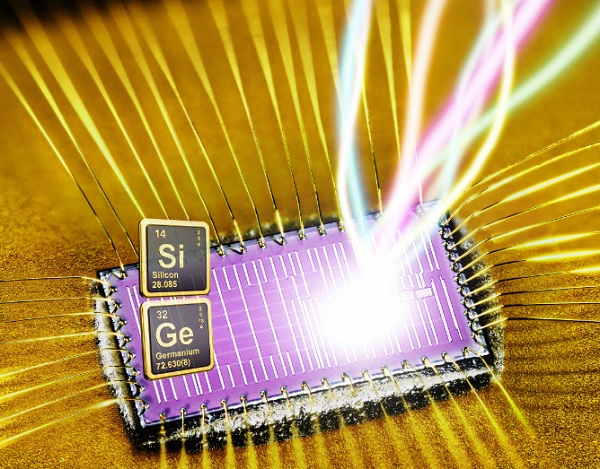International project with JKU participation increases data rates by a factor of 1,000

In the area of semiconductor research, emitting light from silicone - the material dominating all electronic components such as computer chips – has been a "holy grail" for years. An EU-funded research project led by scientists at TU Eindhoven in collaboration with research groups from the TU Munich, the JKU Linz, the University of Jena, and IBM Zurich have succeeded: The scientists have developed a silicon-based alloy that can emit light. The research findings have been published in the renowned magazine "Nature".
For data to be transmitted within chips, light emitters were needed, in particular ones compatible with silicon electronics and able to be integrated. This gap can now be closed, meaning optical communication has been increased by a factor of 1,000. Large data centers will stand to benefit, for example, particularly those that use a large part of their immense energy consumption to cool the waste heat. Other areas, such as environmental or medical diagnostics in which light sources for spectroscopic analyses can be integrated directly into the evaluation electronics, can also benefit greatly from the new development.
After close to 50 years of painstaking research, the breakthrough is a special class of nanostructures, so-called nanowires. These wafer-thin "hairs", just a few micrometers in length, are only about 100nm thick, contain an alloy of silicon and germanium producing a modified crystal structure that can efficiently emits light. According to researchers in Linz, it may even be possible to produce lasers in this way in the near future.








